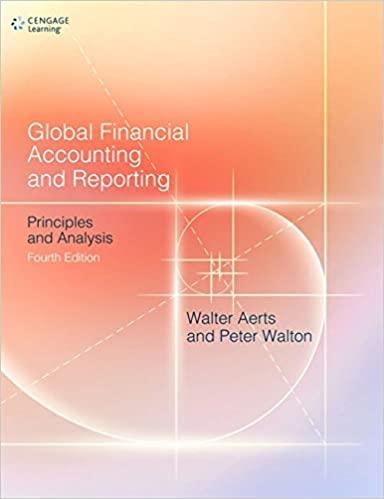



Year 3 $240,000 5,600 245, 600 BENSON COMPANY Statements of Income and Retained Earnings For the Years Ended December 31 Year 4 Revenues Sales (net) $260,000 Other revenues 8,600 Total revenues 268,600 Expenses Cost of goods sold 130,000 Selling, general, and administrative 58,000 Interest expense 8,900 Income tax expense 38,000 Total expenses 234,900 Net earnings (net income) 33,700 Retained earnings, January 1 91,300 Less: Preferred stock dividends 4,000 Common stock dividends 3,200 Retained earnings, December 31 $117,800 112,000 53,000 8,100 37,000 210,100 35,500 63,000 4,000 3,200 $ 91,300 Year 4 Year 3 $ 17,500 20,300 44,000 129,000 28,000 238,800 27,000 270,000 29,000 $564,800 $ 13,500 6,300 36,000 137,000 13,000 205,800 20,000 255,000 24,000 $504,800 Financial statements for Benson Company follow. BENSON COMPANY Balance Sheets As of December 31 Assets Current assets Cash Marketable securities Accounts receivable (net) Inventories Prepaid items Total current assets Investments Plant (net) Land Total assets Liabilities and Stockholders' Equity Liabilities Current liabilities Notes payable Accounts payable Salaries payable Total current liabilities Noncurrent liabilities Bonds payable Other Total noncurrent liabilities Total liabilities Stockholders' equity Preferred stock, (par value $10, 5% cumulative, non-participating; 8,000 shares authorized and issued) Common stock (no par; 50,000 shares authorized; 10,000 shares issued) Retained earnings Total stockholders' equity Total liabilities and stockholders' equity $ 17,200 88,800 24,000 130,000 $ 8,500 75,000 18,000 101,500 130,000 27,000 157,000 287,000 130,000 22,000 152,000 253,500 80,000 80,000 117,800 277,800 $564,800 80,000 80,000 91,300 251,300 $504,800 Required Calculate the following ratios for Year 4 and Year 3. a. Working capital. b. Current ratio. (Round your answers to 2 decimal places.) c. Quick ratio. (Round your answers to 2 decimal places.) d. Receivables turnover (beginning receivables at January 1, Year 3, were $37,000). (Round your answers to 2 decimal places.) e. Average days to collect accounts receivable. (Use 365 days in a year. Round your intermediate calculations to 2 decimal places and your final answers to the nearest whole number.) f. Inventory turnover (beginning inventory at January 1, Year 3, was $143,000). (Round your answers to 2 decimal places.) g. Number of days to sell inventory. (Use 365 days in a year. Round your intermediate calculations to 2 decimal places and your final answers to the nearest whole number.) h. Debt-to-assets ratio. (Round your answers to the nearest whole percent.) i. Debt-to-equity ratio. (Round your answers to 2 decimal places.) j. Number of times interest was earned. (Round your answers to 2 decimal places.) k. Plant assets to long-term debt. (Round your answers to 2 decimal places.) I. Net margin. (Round your answers to 2 decimal places.) m. Turnover of assets (average total assets in Year 3 is $504,800). (Round your answers to 2 decimal places.) n. Return on investment (average total assets in Year 3 is $504,800). (Round your answers to 2 decimal places.) o. Return on equity (average stockholders' equity in Year 3 is $251,300). (Round your answers to 2 decimal places.) p. Earnings per share (total shares outstanding is unchanged). (Round your answers to 2 decimal places.) q. Book value per share of common stock. (Round your answers to 2 decimal places.) r. Price-earnings ratio (market price per share: Year 3, $11.90; Year 4, $12.80). (Round your intermediate calculations and final answer to 2 decimal places.) s. Dividend yield on common stock. (Round your answers to 2 decimal places.) Year 4 Year 3 times days times days times days times days % a. Working capital b. Current ratio c. Quick ratio d. Receivables turnover (beginning receivables at January 1, Year 3, were $37,000) e. Average days to collect accounts receivable f. Inventory turnover (beginning inventory at January 1, Year 3, was $143,000) g. Number of days to sell inventory h. Debt-to-assets ratio i. Debt-to-equity ratio j. Number of times interest was earned k. Plant assets to long-term debt Net margin m. Turnover of assets (average total assets in Year 3 is $504,800) n. Return on investment (average total assets in Year 3 is $504,800) o. Return on equity (average stockholders' equity in Year 3 is $251,300) p. Earnings per share (total shares outstanding is unchanged) 4. Book value per share of common stock Price-earnings ratio (market price per share: Year 3, $11.9; Year 4, $12.80) Dividend yield on common stock times times 1. % % % % per share per share % % per share per share r. S. % %










